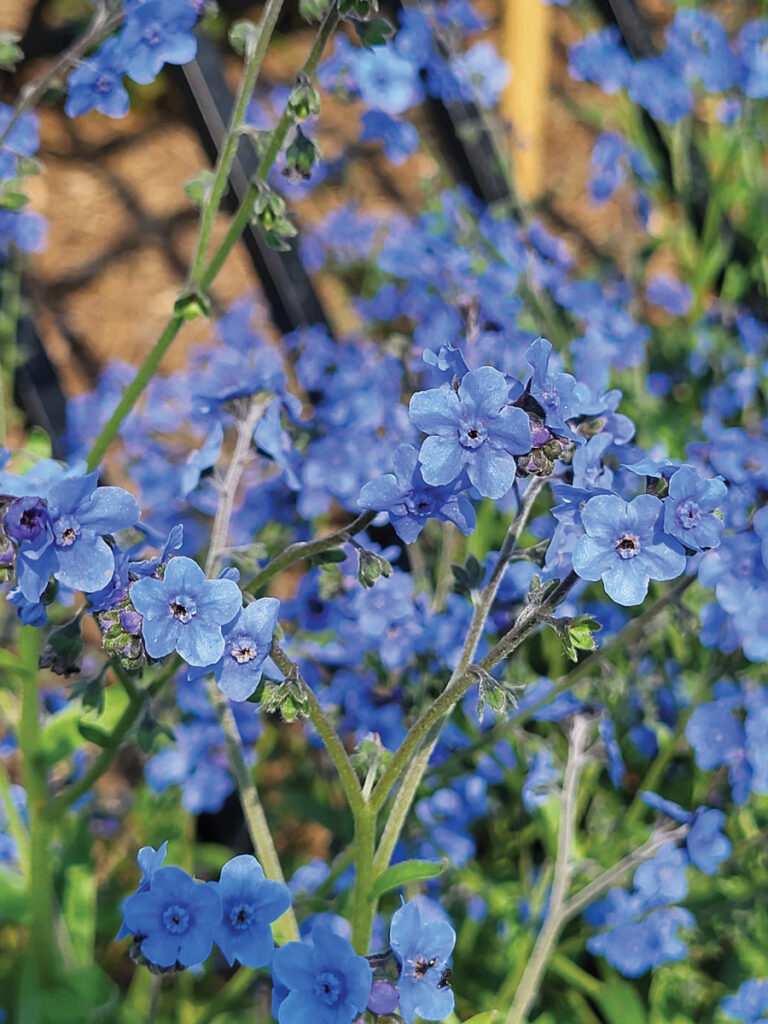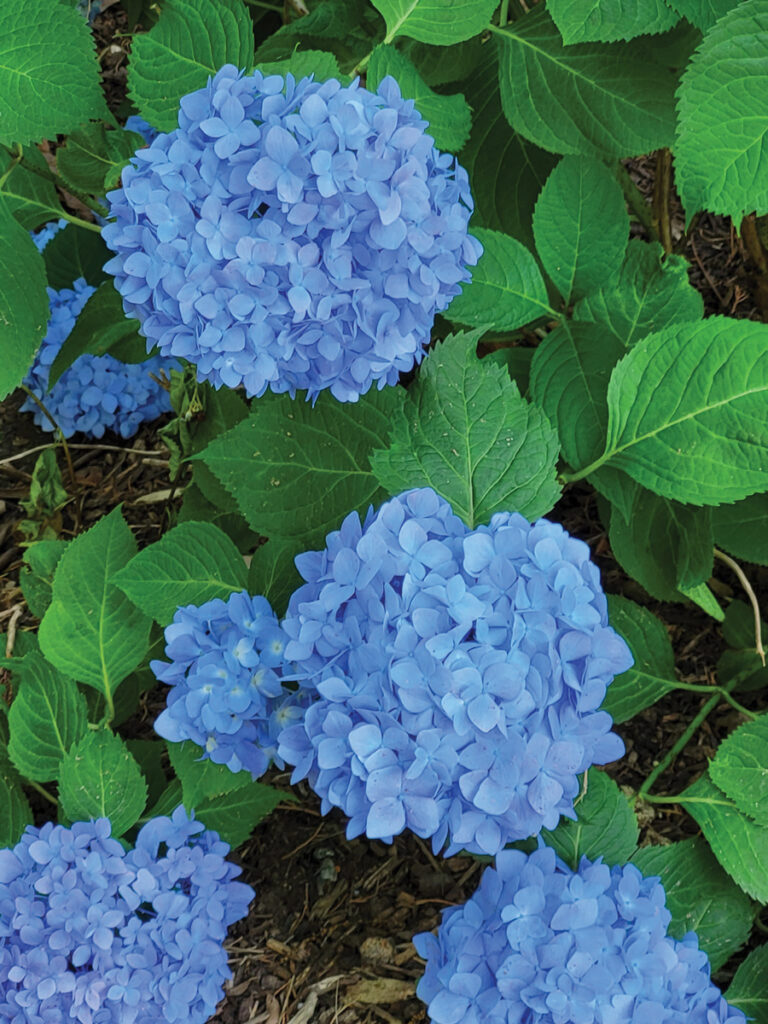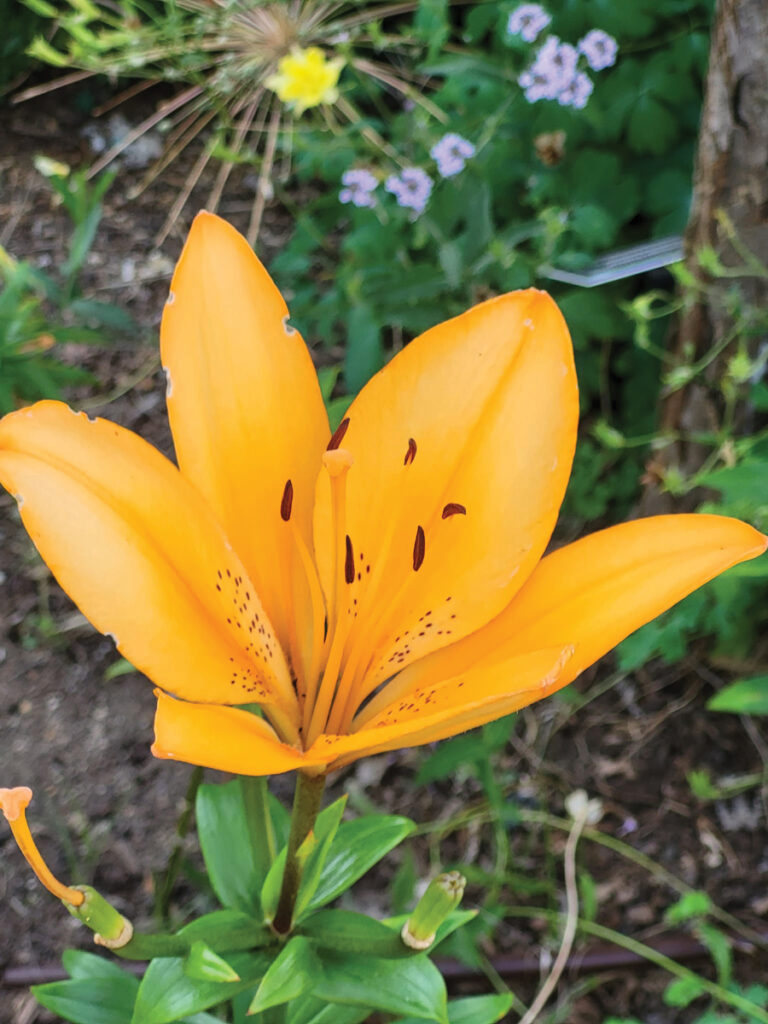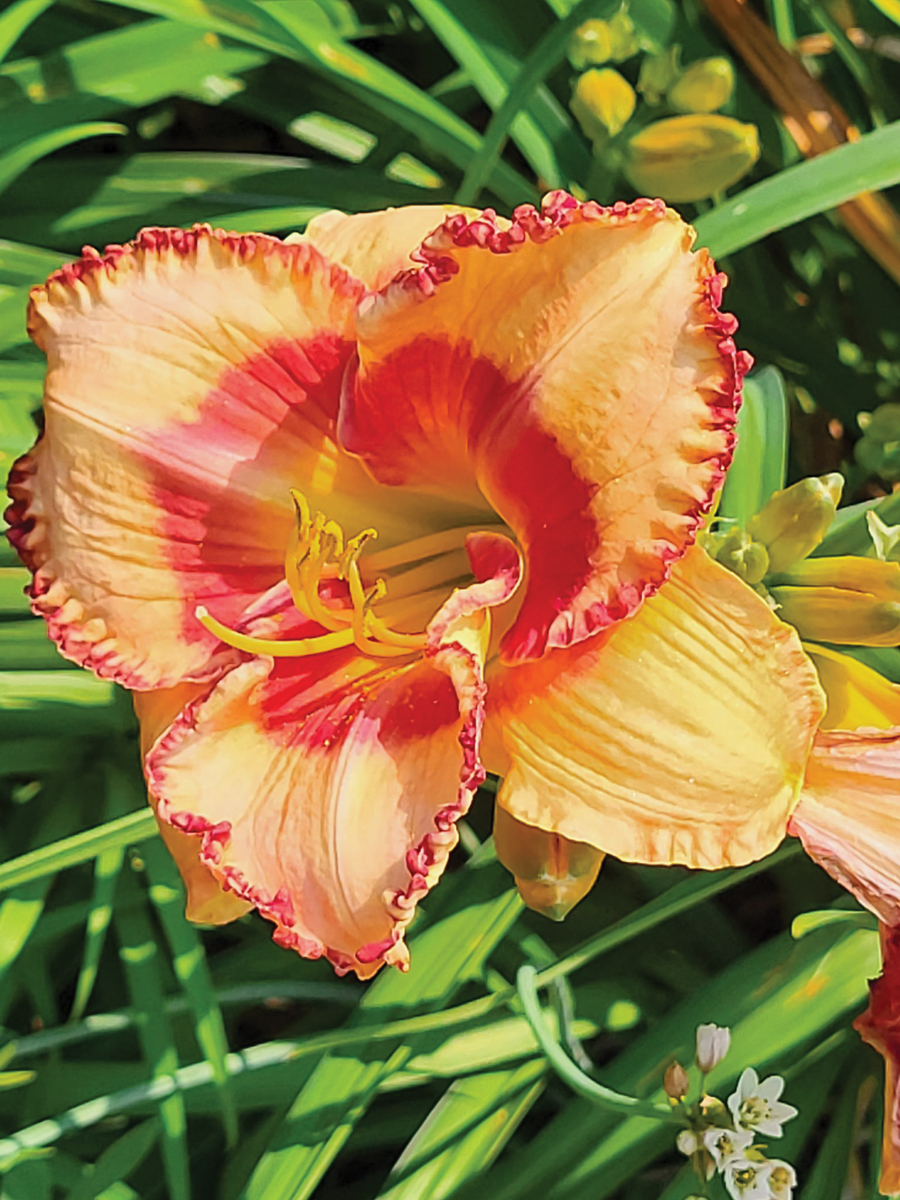We Need Flowers in our Lives
By Renee Skudra


I am currently reading a wonderful book – “Awe: The New Science of Everyday Wonder” by Dacher Keltner which has as one of its central themes that the quality of awe may be “an antidote to our overheated and overstressed times.” As someone who has experienced a lot of anxiety and stress recently, I am listening intently to his advice to “go and find awe outdoors.” This past week I set aside an entire day in Kernersville to spend time communing in nature and deliberating on its beauties, specifically focusing on flowers, which fortunately there are no shortage of in this beautiful little town of friendliness and civility.
I had a chance to visit several gardens and a knowledgeable acquaintance, Adrienne Roethling, Garden Curator at Paul J. Ciener Botanical Garden, provided me with a lot of insight about numerous blooms. We started our talk about why flowers are important to the human psyche. Discussion ensued about how science advances the idea that the presence of flowers triggers happy emotions and inspires us, positively affecting our moods and emotions. They function as symbols of joy, beauty, and pleasure. Some are seen as emblematic of purity and friendship and others are connected to forgiveness and death. Flowers can help in removing harmful toxins from the air and are ultimately part of the food chain which brings us such things as honey, herbs, and other items to enhance our diet.
I have always been of the opinion that if you look for miracles, you will find them. Over the span of several hours, I saw so many of them resplendently growing everywhere. Night-blooming daylilies, a perennial, were in abundance. They thrive from Minnesota to Florida, tolerate a wide variety of soil conditions and bloom faithfully for years with virtually no attention. The daylily’s botanical name – Hemerocallis – means “beauty for a day” and surely, they are appropriately named.
Hydrangeas caught my attention immediately. With rounded blooms resembling pom-poms and flowers that range from cornflower blue to soft purple and magenta. I learned that they do best in moist, well-drained soil and dappled shade. Easy to grow they are hardy and resistant to most pests and diseases. A fun fact that I discovered was that you can make their blossoms change color by adjusting the soil’s pH level.


I had seen butterfly weed before in my travels but knew little about them. A quick search told me that they are an herbaceous perennial, great pollinator plants, and attract a variety of helpful insects to a garden. Characterized by clusters of bright orange-to-yellow blooms, they are rich with nectar and pollen and have a mildly sweet candy-like fragrance. Nearby I saw red yarrow, a member of the Aster family closely related to chamomile and chrysanthemums. Used by numerous Native American tribes for a variety of ailments, the crushed plant was applied to wounds and burns while the dried leaves were used as a tea to soothe colds, fever, and headache. Also known as soldier’s woundwort, yarrow symbolizes courage during wartime and wearing the blossoms is supposed to ensure safety and bravery.
I chuckled when I came upon some catnip growing on a lot, remembering that cats generally have an intense attraction to it. A short-lived perennial, herbaceous plant, it blooms from late spring to autumn and is an ingredient in some herbal teas. A favorite flower I spent time visiting was Borage, also known as starflower. It is an annual herb and is native to the Mediterranean region. Its flowers are most often blue with five narrow triangular-pointed petals and stems and leaves are hairy.
I also happened upon a spring annual known as Larkspur with its clusters of vibrant blue. It is believed to have protective qualities and was a popular ingredient used in spells when warriors went off to battle. Although beautiful, the seeds of the plant are poisonous. The flowers are said to represent love and signify positive attachment to someone. Admittedly I adore the color blue and moments later stumbled upon a large gathering of Forget-Me-Nots with their stunning cerulean hues. Rich in symbolism and lore, they are prolific bloomers, striking blue flowers with yellow throats which make up 74 different species all over the world. Symbolizing true love, fidelity and faithfulness, it is said that when you give someone these tiny blooms, it represents a promise that you will always remember and keep them in your thoughts. A famous legend associated with Forget-Me-Nots describes a German knight who was strolling with his lady by the Danube River. Remarking upon some pretty blue flowers on the banks which she saw, he attempted to secure them for her. However, when he jumped in the water, a powerful current carried him out to sea. As a final gesture he tossed the flowers to her, calling out “vergiss mein nicht” which, in German, means “forget me not.”
The foregoing are only a few of the many gorgeous flowers I saw in Kernersville which brought me much happiness. I did indeed find awe outside as I enjoyed their beauty while looking at them with a focused and intensive purpose. The famous artist Claude Monet remarked, “I must have flowers, always, and always.” These sentiments mirror mine exactly. I must never take flowers for granted again.


Did you know there are two flower farms in Kernersville? One is called My Garden Blooms and the other is called Piney Grove Flower Farm. Shellie and I are both passionate about flowers and happy to bring local flower options to the community of Kernersville as 80% of cut flowers are imported into the US. Love this article!